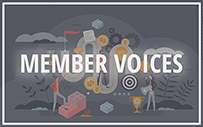
By using a gamified approach to career development, college career services can create scenarios that simulate the workplace and encourage active student participation.

To compete in the job market, students must be able to connect their experiences to skills and communicate that to potential employers. Infusing skill development across campus can achieve that. Jill Donovan, Brookdale Community College, discusses how her career center began the process of integrating career readiness campus-wide.

Review the evidence for the reliability and validity of the NACE Competency Assessment Tool. This article also offers brief context for the assessment tool, outlines the methodology employed, and provides the final, top-line results of the study.

This past summer, Arup expanded its career readiness programming for summer interns by working with its internal learning and development team to implement a series of competency-focused workshops.

Despite the changes caused by COVID-19, some employers and educators have reinstituted traditional recruiting practices that may now present barriers to students impacted by the pandemic.

Shifts in the educational space dictate the need to revisit, revise, and reframe traditional practices to be relevant to the needs of current students.
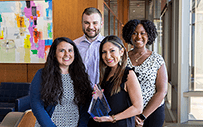
The University of Illinois Chicago, College of Liberal Arts and Sciences Career Development Office, winner of the 2024 NACE Career Readiness Excellence Award, designed an innovative eight-week, one-credit career strengths-based course for its students.

Northwestern Mutual shifting the focus of its internship program to development of career readiness competencies seemed like a natural progression since the company was already focusing on themes similar to those identified by NACE’s competencies.

The NACE Career Readiness Competencies can be a valuable tool to help faculty members demonstrate to administrators, students, and parents that what they do creates long-term value for students.
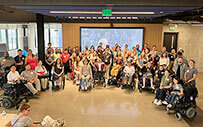
Winner of the 2024 Chevron Innovation Award, the Gregory S. Fehribach Center at Eskenazi Health empowers Indiana college students with physical disabilities to achieve equitable employment following graduation.

Faculty are a key source of career advice for students—with more than nine of out 10 saying students asked them for guidance in the past year, according to a new study conducted by NACE in collaboration with the American Association of Colleges & Universities and the Society for Experiential Education.

A former dean now working with hiring organizations offers five lessons for how higher ed can work with industry and move the needle for students—especially low-income and first-generation students.

The Yale Office of Career Strategy enlisted the help of key partners to create an assessment tool that incorporates design-thinking principles and is available to everyone, not just Yale students and alums.
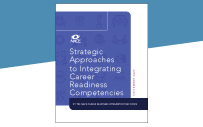
Strategic Approaches to Integrating Career Readiness Competencies, developed by the NACE Career Integration Task Force, identifies strategies and practices for integrating career readiness skills and competencies institution-wide and examines how career readiness informs skills-based hiring. The publication also identifies further areas for research.

To make McPherson College students aware of the skills they are developing during their campus jobs, Amy Beckman incorporated career readiness competencies into student job descriptions and supervision.

The University of California, San Diego Career Center developed the Triton Career Readiness Passport to help students launch a personal career journey by answering a simple question: Why?

Getting faculty buy in, having liaisons in different departments, and having the faculty be program champions was the key to the success of Georgia State’s “College to Career” career readiness initiative.

While moving to a virtual world and with little experience using virtual tools, William & Mary career center staff connected students and alumni by creating the Professional Development Academy.
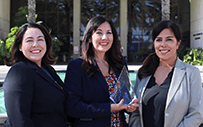
CSU Fullerton’s “I Am First” program teaches first-generation students how to create social capital through a curriculum that empowers students to cultivate agency in their career search.

Dominican University, a Hispanic-serving institution with 64% of students identifying as Latinx and located just outside of Chicago, launched its successful career development program in its Brennan School of Business in fall 2017.

In a unique interview with ChatGPT, NACE asks the AI language model how it feels about its use as a tool in the job search, career readiness, and talent acquisition; the ethics of its use; and more.

Members of the NACE Community recently offered some suggestions to their colleagues for books to add to their summer reading lists.

New to the repository is “Curated Resources for Teaching and Assessing Career Readiness Competencies,” a compendium developed through a grassroots effort by NACE members. Access this and other resources at www.naceweb.org/career-readiness/resources/ .

The effective preparation of college students for careers is an important college outcome. Yet, employers and the public increasingly feel that universities are not doing enough to prepare students for the workforce

There are two types of people in the world of career services: people who know about JLD and those who have not heard about it yet. It is a tad obscure and vague; however, it can have a significant impact on a student’s educational journey and pathway to career success.
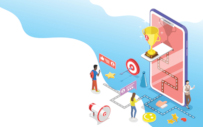
With no additional budget, Clarion’s Center for Career and Professional Development built and implemented a mentor program for students.

At the University of South Carolina, career services is working to make career readiness and employability everyone’s responsibility with its career champions program.

Career success means a commitment to lifelong learning to add skills and credentials that employers need. The adaptive innovator—or T-professional—does just that.

Winner of the 2023 NACE/Chevron Award, the IUPUI First Generation Career Connection Night connects first-generation students to employers to build their social capital.

The authors look at the similarities and differences in how college students and employers describe leadership and its various proficiency levels.

Since the success of career readiness plays out in the classroom, faculty need to drive implementation of the career readiness competencies.

Systemic reform centered on active learning is essential to cultivate career competencies.

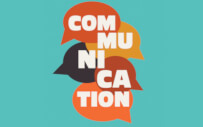
Research conducted by Aaron James and Troy Nunamaker, Clemson University, indicates that many students under- or overrate their communication skills, perhaps because they are assessing them in the context of an academic setting, not the workplace.

Career services offices should provide programming and resources to help boost students’ proficiency in critical thinking, communication, and professionalism.

Undergraduate research, scholarship, and creative inquiry experiences can help students build competencies in all eight NACE career readiness competencies.

The Carolina Cluster forged a new model for career readiness and designed and implemented programs to improve employment outcomes for graduates.